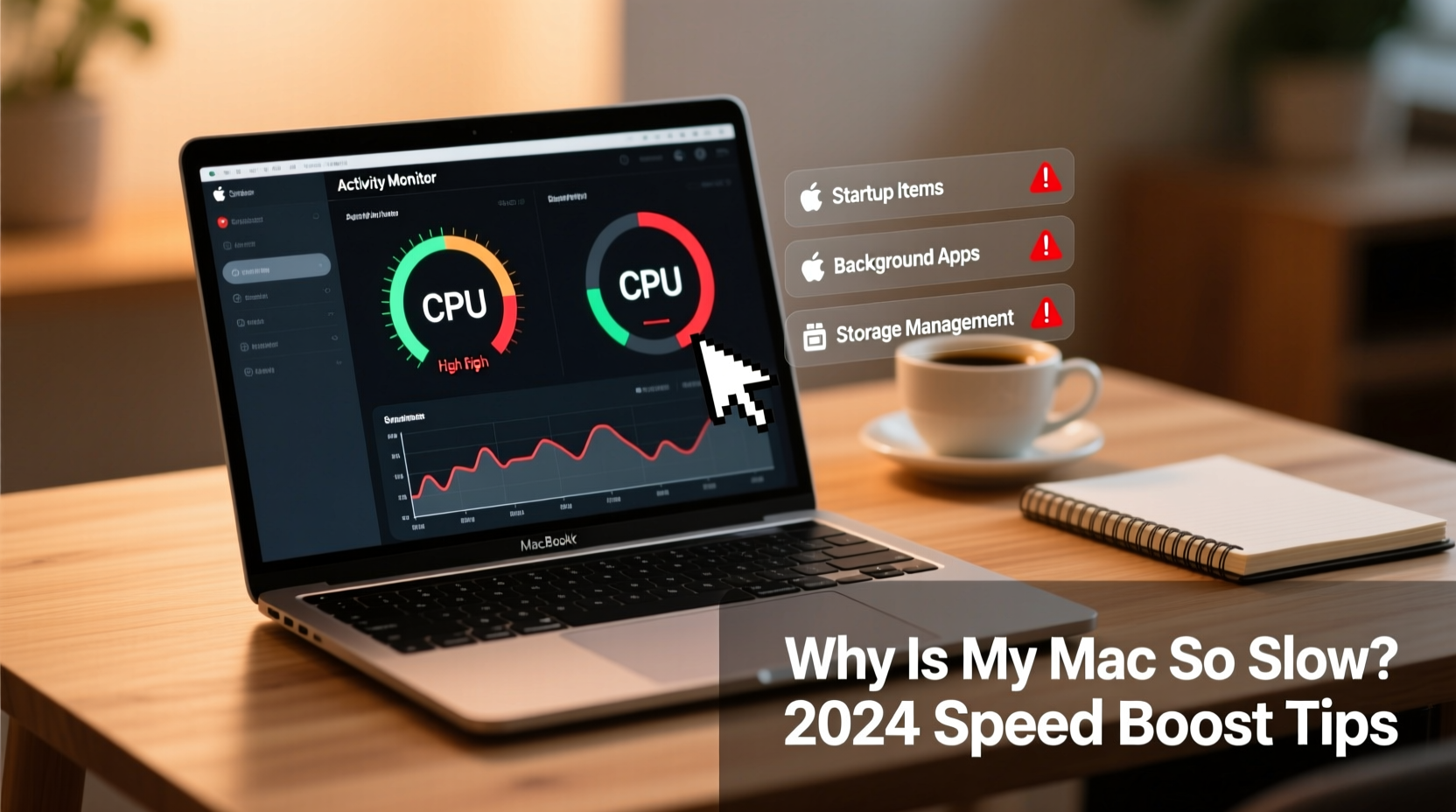If your Mac has started to feel sluggish—launching apps slowly, freezing during simple tasks, or taking forever to boot up—you're not alone. Even high-end Apple computers can degrade in performance over time. The good news? Most slowdowns are fixable without replacing hardware. Understanding the root causes and applying targeted solutions can restore your Mac’s responsiveness and extend its useful life.
Common Causes of a Slow Mac

A slow Mac isn’t always due to aging hardware. Often, it's a combination of software clutter, background processes, and inefficient usage patterns. Here are the most frequent culprits:
- Insufficient RAM usage: Running too many apps simultaneously can exhaust available memory.
- Low disk space: macOS needs free space for virtual memory and system caches. Below 10% free storage can severely impact performance.
- Too many login items: Apps that launch at startup consume resources before you even begin working.
- Outdated software: Old versions of macOS or applications may lack optimizations or contain bugs.
- Background processes: Spotlight indexing, Time Machine backups, or third-party updaters can spike CPU usage.
- Fragmented cache files: Accumulated temporary files can interfere with system operations.
Step-by-Step Guide to Diagnose Performance Issues
Before applying fixes, identify what’s actually slowing your Mac. Use built-in tools to assess system health.
- Open Activity Monitor: Found in Applications > Utilities, this tool shows real-time CPU, Memory, Energy, Disk, and Network usage.
- Sort by CPU %: Look for processes using more than 50–70% consistently. If an app is stuck at 100%, it may be frozen.
- Check Memory Pressure: In the Memory tab, green is optimal; yellow suggests strain; red means severe overload.
- Review Disk Usage: High read/write activity without user input could indicate background indexing or malware.
- Monitor Energy Impact: On laptops, high energy usage shortens battery life and throttles performance.
If you notice unfamiliar processes consuming excessive resources, research their names. Some may be malware or outdated helper tools from uninstalled apps.
Effective Speed-Boosting Techniques
Once you’ve diagnosed the issue, apply these proven methods to reclaim speed and stability.
1. Free Up Disk Space
macOS uses disk space for swap files and caching. When storage drops below 10–15 GB free, performance tanks.
To clean up:
- Delete large, unused files (videos, downloads, old backups).
- Empty the Trash permanently.
- Use “Optimize Storage” in Apple Menu > About This Mac > Storage Management.
- Remove language files from apps you don’t need (with caution).
2. Manage Login Items
Every app set to open at login slows boot time and consumes RAM.
Navigate to System Settings > General > Login Items. Disable unnecessary entries like:
- Chat apps (Slack, Skype)
- Cloud services (Dropbox, OneDrive) — unless actively syncing
- Printer utilities
- Old Adobe or Microsoft helpers
3. Reset SMC and NVRAM
The System Management Controller (SMC) regulates power, fans, and thermal management. The NVRAM stores settings like volume, display resolution, and startup disk.
If your Mac runs hot, fans spin constantly, or wakes poorly from sleep, resetting these can help.
“Resetting the SMC resolved persistent fan noise and lag on my 2018 MacBook Pro.” — Daniel R., IT Consultant
To reset SMC on Apple Silicon Macs: Shut down, wait 30 seconds, restart. No manual reset needed.
On Intel Macs: Shut down, press Shift+Control+Option+Power for 10 seconds, then release and power on.
To reset NVRAM: Restart and hold Option+Command+P+R for about 20 seconds.
Do’s and Don’ts of Mac Maintenance
| Do | Don’t |
|---|---|
| Restart your Mac weekly | Ignore software updates |
| Use built-in Storage Management tools | Install third-party \"cleaner\" apps recklessly |
| Keep macOS and apps updated | Leave dozens of browser tabs open for days |
| Disable unused startup items | Store files directly on the desktop (slows Finder) |
| Back up with Time Machine | Run out of disk space regularly |
Real Example: Reviving a Lagging MacBook Air
Sarah, a freelance writer, noticed her 2020 MacBook Air took over three minutes to start up and frequently froze when using Safari with multiple tabs. After checking Activity Monitor, she found Google Chrome was using 3.2 GB of RAM across eight windows.
She followed these steps:
- Closed all Chrome instances and switched to Safari for daily use.
- Removed Slack, Zoom, and Spotify from login items.
- Used Storage Management to delete 12 GB of old video projects.
- Updated macOS to the latest version.
- Restarted the machine.
Result: Boot time dropped to 22 seconds, and general responsiveness improved dramatically. Sarah now schedules monthly cleanup sessions to maintain performance.
FAQ
Will upgrading my RAM make my Mac faster?
It depends. On older Macs with 8GB or less, adding RAM helps significantly when multitasking. However, most modern Macs have soldered RAM, making upgrades impossible. In those cases, optimizing software usage is more effective.
Is it safe to delete system cache files?
Generally, yes. macOS regenerates cache files as needed. You can safely remove contents of ~/Library/Caches and /Library/Caches. Avoid deleting the folders themselves—just empty them.
Why does my Mac slow down after a macOS update?
After an update, macOS often runs background indexing (Spotlight), recompiling shaders, or optimizing files. This can last several hours. Let it complete overnight. If slowness persists beyond 24 hours, investigate disk space or incompatible apps.
Conclusion: Take Control of Your Mac’s Performance
A slow Mac doesn’t mean it’s time to upgrade. With systematic troubleshooting and consistent maintenance, most machines can perform smoothly for years. The key is proactive care—monitoring resource usage, managing storage, and eliminating digital clutter before it becomes critical.
Start today: Open Activity Monitor, review your login items, and free up at least 10 GB of space. These small actions deliver immediate improvements. Over time, build a routine that includes monthly cleanups and regular restarts.









 浙公网安备
33010002000092号
浙公网安备
33010002000092号 浙B2-20120091-4
浙B2-20120091-4
Comments
No comments yet. Why don't you start the discussion?